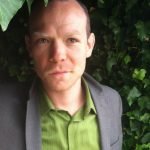Node Smith, ND
Research engineers developed nanorobots that can swim through the body’s fluids removing harmful bacteria and other toxins.1 The proof-of-concept robots may one day allow a new way to detoxify and clean biological fluids. The full explanation of these amazing new robots can be found in Science Robotics. The work is a combination of technologies developed by both Joseph Wang and Liangfang Zhang, professors of NanoEngineering at University of California San Diego Jacobs School of Engineering.
Robots may one day allow a new way to detoxify and clean biological fluids
The robots have been made by coating nanowires made of gold with a combination of platelets and red blood cell membranes. The hybrid cell membrane gives the nanorobots a dual function, able to do tasks of both types of cells at the same time. On the one hand the robots are able to bind pathogens, like MRSA, similar to a platelet, and simultaneously absorb and neutralize toxins that are produced by these pathogens, like a red blood cell. The purpose of the nanorobots being made of gold is to respond to ultrasound, which allows them to swim around quickly without needing any sort of fuel. The coating of the robots also keeps them protected from biofouling, a process of protein collection onto the surface of foreign objects in the body.
How it works
In order to coat the nanorobots with cell membranes, the membranes of platelets and red blood cells first had to be removed intact. Then a high-frequency sound wave was used to fuse the two different membranes together. The membranes, having been taken from living cells, contained all the cell surface protein functions. The membranes were then applied to gold nanowires using specific surface chemistry.
Nanorobots are incredibly tiny and can move up to 35 micrometers per second under ultrasound power
The nanorobots are incredibly tiny, about 25 times smaller than a human hair. They can move up to 35 micrometers per second under ultrasound power. The researchers showed that in test samples of blood contaminated with MRSA, that after 5 minutes the blood samples had 3 times less bacteria present compared to untreated samples.
Researchers insist the goal is not to treat infection but to detoxify biological fluids
The research is still underway. Researchers are clear that the actual goal of these nanorobots is not to treat infection, but rather to detoxify biological fluids, though it does seem that the possibilities of this technology are very widespread. Future tests will be conducted in live animals soon, and the engineer team is also attempting to use other materials besides gold, so the nanorobots could be biodegradable.
Source:
- Esteban-Fernández de Ávila B, Angsantikul P, Ramírez-Herrera DE, et al. Hybrid biomembrane–functionalized nanorobots for concurrent removal of pathogenic bacteria and toxins. Science Robotics 30 May 2018. Vol. 3, Issue 18, eaat0485. DOI: 10.1126/scirobotics.aat0485
Image Copyright: <a href=’https://www.123rf.com/profile_lightwise’>lightwise / 123RF Stock Photo</a>
 Node Smith, ND, is a naturopathic physician in Portland, OR and associate editor for NDNR. He has been instrumental in maintaining a firm connection to the philosophy and heritage of naturopathic medicine among the next generation of docs. He helped found the first multi-generational experiential retreat, which brings elders, alumni, and students together for a weekend camp-out where naturopathic medicine and medical philosophy are experienced in nature. Four years ago he helped found the non-profit, Association for Naturopathic ReVitalization (ANR), for which he serves as the board chairman. ANR has a mission to inspire health practitioners to embody the naturopathic principles through experiential education. Node also has a firm belief that the next era of naturopathic medicine will see a resurgence of in-patient facilities which use fasting, earthing, hydrotherapy and homeopathy to bring people back from chronic diseases of modern living; he is involved in numerous conversations and projects to bring about this vision.
Node Smith, ND, is a naturopathic physician in Portland, OR and associate editor for NDNR. He has been instrumental in maintaining a firm connection to the philosophy and heritage of naturopathic medicine among the next generation of docs. He helped found the first multi-generational experiential retreat, which brings elders, alumni, and students together for a weekend camp-out where naturopathic medicine and medical philosophy are experienced in nature. Four years ago he helped found the non-profit, Association for Naturopathic ReVitalization (ANR), for which he serves as the board chairman. ANR has a mission to inspire health practitioners to embody the naturopathic principles through experiential education. Node also has a firm belief that the next era of naturopathic medicine will see a resurgence of in-patient facilities which use fasting, earthing, hydrotherapy and homeopathy to bring people back from chronic diseases of modern living; he is involved in numerous conversations and projects to bring about this vision.




